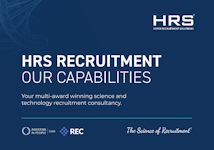More on their scientific contribution
The scientific process they worked on is called asymmetric organocatalysis. This is a process that makes it easy for researchers to produce asymmetric molecules, chemicals that exist in two different forms, where one form is a mirror image of the other. Some molecules with mirror images have different properties, which is why it's so valuable for scientists to be able to create just one, or both chemicals when they're needed.
An example of an asymmetric chemical where one of the mirror image molecules has different properties to the other is carvone. One molecule smells like spearmint while the other smells like the herb dill. Based on chemicals like this, Professors List and MacMillan wanted to create a process that would allow mirror images of different chemicals to be made. If the human brain can differentiate between the same chemical in different forms, there's a chance that mirror images of drugs and other medicines could be used to treat different illnesses.
One example where this technology would've been useful is in thalidomide, the medication approved for morning sickness in pregnant women during the 1950s. This medication contained two mirror images of the same compound, one of which treated the morning sickness, the other is responsible for damaging the developing foetus. Sadly, if researchers at the time had had the ability to create only the drug with the desired effect, the thalidomide epidemic might never have happened.
Success for a British scientist
It's wonderful to see the work of David MacMillan (originally from North Lanarkshire) being recognised on such a global scale. The Scottish chemist spent most of the late 90s working with metal catalysts. However, his work wasn't always used in industry because it couldn't be scaled.
To combat this, he went on to design simple organic molecules that could do the same job as metals without being damaged by moisture. These were revolutionary molecules that hadn't been explored so thoroughly in the field before. During his career, MacMillan became the James S McDonnell Distinguished Professor of Chemistry at Princeton University in New Jersey - an impressive title!
Over his career, MacMillan has contributed some revolutionary ideas to science, and we're excited to see what he will do next.
Want to find out which famous British scientist you are? Take a look at our quiz!
Quiz: Which Famous British Scientist Are You?
